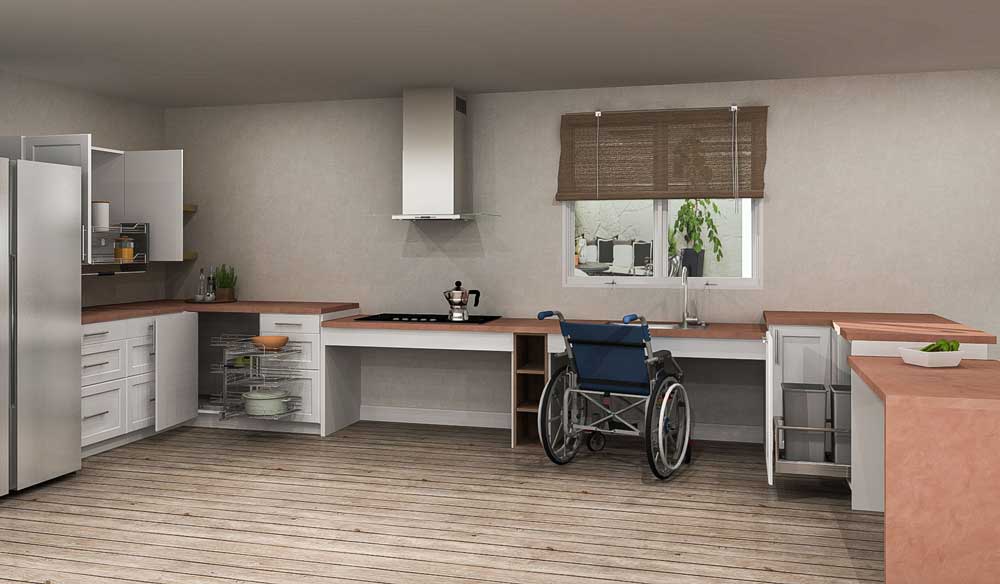Creating an accessible home environment is crucial for ensuring comfort and independence for everyone, including those with disabilities. One of the key components of an accessible home is the installation of ADA-compliant toilets. These toilets are designed to meet the standards set by the Americans with Disabilities Act (ADA) to provide ease of use for individuals with mobility challenges.

What are ADA-compliant toilets?
ADA-compliant toilets are specially designed bathroom fixtures that meet specific height, space, and accessibility requirements as outlined by the ADA. These toilets are typically higher than standard toilets, making it easier for individuals to sit down and stand up. Additionally, they provide sufficient space around the toilet for maneuvering a wheelchair or other assistive devices.
Importance of ADA Standards
The ADA sets forth guidelines to ensure that public and private spaces are accessible to individuals with disabilities. For homeowners, adhering to these standards is not only about compliance but also about creating an inclusive environment that accommodates the needs of all individuals, including elderly family members or friends with mobility issues.
Key Features of ADA-compliant toilets
Some essential features of ADA-compliant toilets include:
- Height: The height of the toilet seat should be between 17 to 19 inches from the floor.
- Flush Controls: Easily operable with one hand and without tight grasping, pinching, or twisting of the wrist.
- Space: Adequate clear floor space around the toilet for wheelchair access.
Benefits of Installing ADA-compliant toilets
Installing ADA-compliant toilets offers numerous advantages:
- Enhances safety by reducing the risk of falls.
- Promotes independence for those with mobility challenges.
- Increases the value of your home by making it more accessible.
Choosing the Right ADA-compliant toilet
When selecting an ADA-compliant toilet, consider factors such as the dimensions of your bathroom, the style of toilet, and any additional features that might be beneficial, such as bidet functions or heated seats.
Installation Tips
Proper installation is crucial for ensuring that your ADA-compliant toilet functions as intended. It’s recommended to hire a professional plumber who is familiar with ADA requirements to ensure compliance and optimal performance.
Common Misconceptions
There are several misconceptions regarding ADA-compliant toilets. One common myth is that they are only necessary for public buildings. However, these toilets are equally beneficial in private homes, enhancing accessibility for residents and visitors alike.
Cost Considerations
The cost of ADA-compliant toilets can vary depending on the brand, features, and installation expenses. While they might be slightly more expensive than standard toilets, the benefits they provide can outweigh the initial investment.
Maintaining Your ADA-compliant toilet
Regular maintenance is essential to ensure the longevity and functionality of your ADA-compliant toilet. This includes cleaning, inspecting for leaks, and ensuring that all components are in good working order.
Additional Accessibility Enhancements
Beyond toilets, consider other accessibility improvements in your bathroom, such as ADA-compliant showers, accessible sinks, and grab bars.
Real-life Stories
Many homeowners have shared positive experiences after installing ADA-compliant toilets. For instance, a family in New York reported that their elderly parent’s quality of life improved significantly with the installation of an accessible bathroom.
Where to Buy ADA-compliant toilets
These toilets are available at most major plumbing supply stores and online retailers. Be sure to check the specifications to ensure they meet ADA standards before purchasing.
Expert Tips
Consulting with an accessibility expert can provide valuable insights into choosing and installing the right ADA-compliant toilet for your home. They can also guide you in making additional modifications to enhance your home’s overall accessibility.

Frequently Asked Questions
What is the difference between standard and ADA-compliant toilets?
Standard toilets typically have a seat height of around 15 inches, while ADA-compliant toilets have a seat height of 17 to 19 inches, making them easier for individuals with mobility challenges to use.
Are all ADA-compliant toilets the same?
No, they come in various styles and with different features. It’s important to choose one that fits your bathroom’s dimensions and meets your personal needs.
Can I install an ADA-compliant toilet myself?
While it’s possible to install a toilet yourself, hiring a professional is recommended to ensure it meets all ADA requirements and is installed correctly.
For more information on making your home accessible, check out resources like United Spinal Association.
This article contains affiliate links. We may earn a commission at no extra cost to you.

